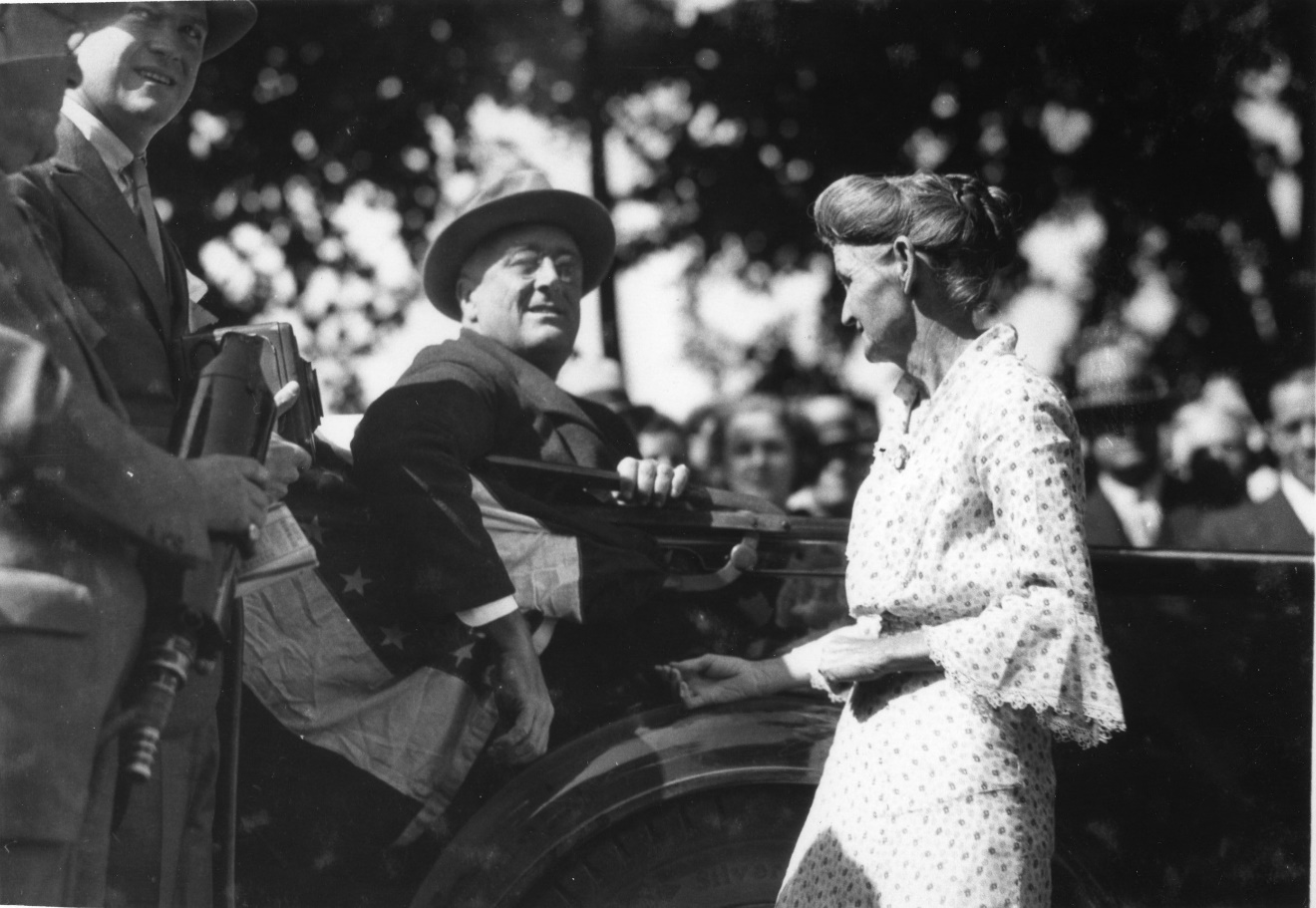The Early History of Waterloo, Nebraska
Written by Natalie Kammerer
Research by Josalyn Switzer
The village of Waterloo in western Douglas County has a history almost as old as Omaha’s. The land was most notably settled by John H. Logan and Elias A. Kelsey, who arrived in 1863 and 1867, respectively. Logan was a Kentucky-born veteran of Company B, 2nd Nebraska Cavalry who settled in Nebraska directly after leaving the Civil War. Kelsey, born in New York, was originally a farmer, then became successful in the milling business.
When these men arrived in the 1860s, there were approximately 25 people living in the precinct. By 1864, John Logan had assumed the role of postmaster, and the local post office was run out of his home. He also ran a small lending library of his own books.[1] Shortly after he moved to the area, Elias A. Kelsey constructed a house and a mill that used the river for power.[2]
By 1868, Logan and Kelsey partnered to purchase the land that would become the town of Waterloo, and they began the work of platting the land in 1871, with partnership from the Union Pacific Railroad. By this time, the UPRR had designated the town as a stop on the route westward, and Logan, Kelsey, and UP officials arranged to locate the depot in the center of town.[3]

Plat map of Waterloo, Nebraska circa 1885. Courtesy of Douglas County Historical Society.
There are several different origin stories behind the name “Waterloo.” Some say the name was inspired by the Battle of Waterloo fought in Belgium, which marked the end of the Napoleonic Wars in 1815.[4] Other sources note that Elias Kelsey was born near Waterloo, New York, and thus point to this fact as the reasoning behind the town’s name.[5] Still another (albeit less likely) story is recounted in a 1971 document. Here, the author cites a family legend that an old man living in the area had a horse named Lou that he took to water every day. When onlookers asked where he was going, he would reply: “Down to water Lou…”[6] Perhaps the name’s historical and personal significance were appealing to both the UPRR and Elias Kelsey, making a compromise easy.

High Water on Main Street, 1918. Due to the town’s location right along the Elkhorn River, it was prone to flooding, as can be seen in this photo of four men rowing along Main Street in 1918. Maybe Ralph Wilson’s legend wasn’t so far-fetched after all… Courtesy of Douglas County Historical Society.
Shortly after platting the town and erecting the UPRR depot in 1871, co-founders Logan and Kelsey constructed the village’s first schoolhouse. At the same time, the men attempted to incorporate the village, but were unsuccessful. Another attempt in the late 1870s failed, and it wasn’t until January 2, 1883 that the town was officially incorporated.
Even before the railroad, Waterloo had been a popular passage for freight wagons traveling through the Elkhorn-Platte Valley. After the railroad was opened, raw materials were shipped through the town in huge amounts.[7]
The population grew quickly in the years following the village’s establishment and the construction of the railroad, doubling in size between 1879 and 1881. The town became an important supplier of vine and corn seed, and was the site of several companies: Emerson Seed; Omaha Elevator; Hively Seed; Hopper Grain; Waldron Seed; Western Seed & Irrigation; Waterloo Elevator and Stimmel Seed; Coy & Sons, which started in 1879 and became Cornhusker Seed in the 1950s; and the Robinson Seed Company, established in 1888, is still owned and managed by the family. [8] Robinson Seed Co. was the largest of them all, and is the only one still in business today (as a member company of Golden Harvest Seeds Inc., one of the nation’s largest seed brands).[9]

Waldron Seed Company, 1911. Courtesy of Douglas County Historical Society.
By 1881, the population had reached 300, and the town boasted three churches (Methodist, Presbyterian, and “Christian”), two hotels (one owned by John Logan), two doctors, an attorney, a restaurant, two meat markets, a milliner, and several other necessary conveniences.[10]
In 1919, Waterloo became the permanent site of the Douglas County Fair, and continues to be held there today.

Original program from the first annual Douglas County Fair held at Waterloo, 1919. Courtesy of Douglas County Historical Society.
In 1932, President Franklin Roosevelt visited both Omaha and the Gus Sumnick farm in Waterloo, where he addressed a crowd of supporters.

President Franklin Roosevelt speaks with a woman during his visit to the Gus Sumnick farm in Waterloo, 1932. Courtesy of Douglas County Historical Society.
[1] Logan, John H. “A Brief Yet Complete History of Waterloo.” January 6, 1882. Quoted in Ralph Wilson’s “Founders of Waterloo, Nebraska.”
[2] Wilson, Ralph C. “Founders of Waterloo, Nebraska.” 1971.
[3] Andreas, A.T. History of the State of Nebraska. The Western Historical Company. 1881.
[4] Perkey, Elton. Perkey’s Nebraska Place Names. 1982.
[5] Andreas, A.T. History of the State of Nebraska. The Western Historical Company. 1881.
[6] Wilson, Ralph C. “Founders of Waterloo, Nebraska.” 1971.
[7] Ibid.
[8] Wilson, Ralph C. “Waterloo, Douglas County.” Virtual Nebraska Project, University of Nebraska-Lincoln. 2005. https://casde.unl.edu/history/counties/douglas/waterloo/index.php . Accessed August 11, 2021.
[9] Mooney, Laura. “Hybrid Corn Ads from the J.C. Robinson Seed Company.” History Nebraska. https://history.nebraska.gov/blog/hybrid-corn-ads-jc-robinson-seed-company. Accessed August 11, 2021.
[10] Andreas, A.T. History of the State of Nebraska. The Western Historical Company. 1881.